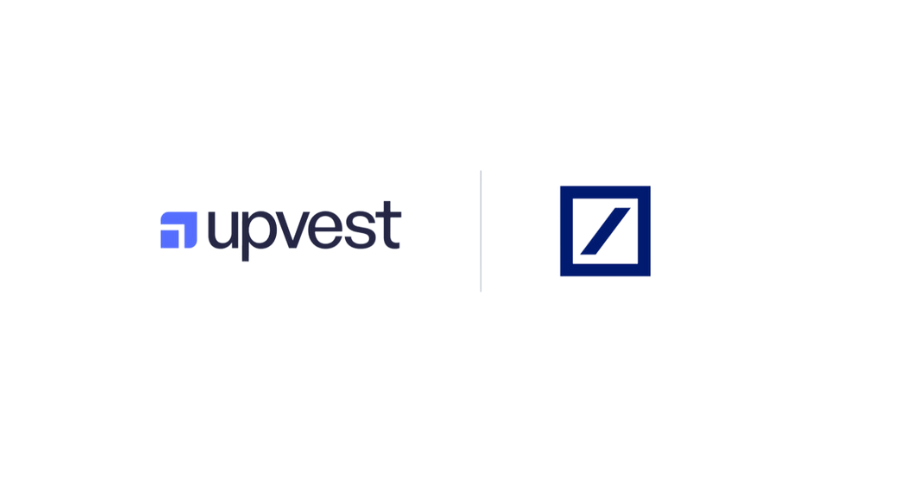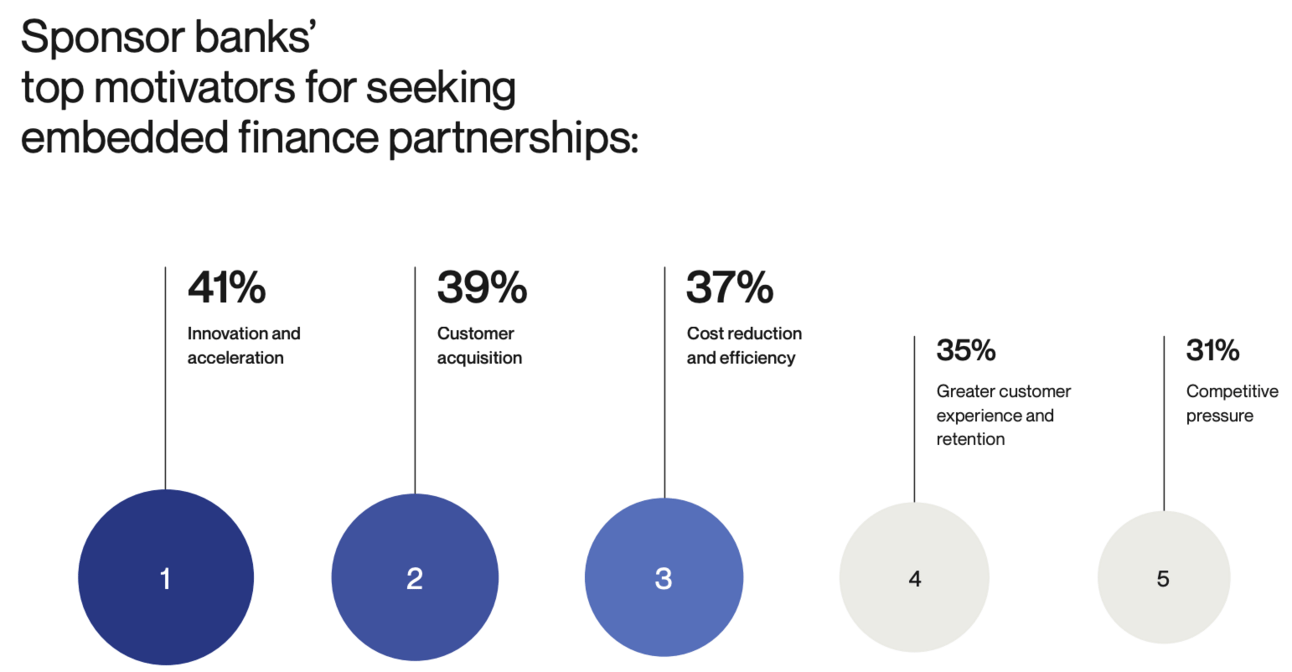Hi {{first name|embedded finance friend}}
Welcome to the last newsletter edition that I am sending out from India. At least in 2024. My next trip is planned for April 2025.
My last days here in Mumbai will be rather busy, and we will be on the plane next Monday. Thus, I will likely send the newsletter next Tuesday a bit later than usual.
In this edition, we cover:
🎙️ How does embedded lending work around the world? In the newest podcast episode, we take a deep dive into the Indian and US market
🤝 Deutsche Bank partners with Upvest: How banks can enter embedded finance
💸 Delivery Hero launches financing products: Better late than never?
🪙 Ecommerce giant launches its own stablecoin product: Why does it make sense for them but not for others?
📚 A new report covers the state of mind of US sponsor banks: Recent regulatory actions are keeping everybody awake at night, but the opportunity is too big to give up.
Sounds interesting? Let’s dive in 👇
Podcast: How does embedded lending work around the world?

Last week, I already touched on how embedded lending is on fire. The COVID years have given birth to many embedded lending companies and products, but it has gotten quieter in 2023 with the markets turning south. With inflation coming back to a normal level and interest rates dropping (or indications of it), it seems that lending products are also back on the radar for many. We have seen many announcements from food delivery platforms (see news further down) to home improvement providers.
This week, I want to go a level deeper and share how embedded lending works around the world. I invited Ankit Singh for a podcast episode where we talk about how he helped build the public (!) embedded lending framework in India and why he decided to found his own embedded lending startup in the US. The concept of embedded lending is the same around the globe, but there are many nuances. We tried to cover as many as possible, with a focus on India and the US.
You can find the podcast on Spotify, Apple Podcasts, and other platforms.
Deutsche Bank partners with Upvest

The two German companies have announced a partnership where Upvest will leverage banking infrastructure from Deutsche Bank (Finextra). Upvest is a trading API provider empowering various fintech startups and banks (i.e., Revolut in Germany, N26) to offer equity investment products such as ETFs and stocks. Deutsche Bank provides Upvest’s trading customers with the necessary virtual IBAN technology so they can transfer funds before making their investments.
As you can see, Upvest focusses strongly on financial companies and, to my knowledge, does not have a non-financial brand as a live customer. It is not a surprise, as embedding investment products into a non-financial customer journey is a lot harder than, for example, banking or lending products. But if you have listened to my podcast episode with Iven Kurz from Evergreen (Podcast), you know that there are many companies currently exploring such an offering.
Once Upvest is live with their first non-financial brand, you could say that Deutsche Bank is part of this embedded finance offering. And partnering with embedded finance infrastructure companies is an interesting opportunity for many European and international banks.
And it’s not the first time Deutsche Bank has done it. In fact, Deutsche Bank offers the banking infrastructure not just to Upvest but also to their direct competitor, Lemon Markets. They clearly decided not to build the API trading infrastructure themselves but rather to partner with technology companies to do this. While the potential commercial success of this strategy is lower than building it themselves, it is less risky, especially since they can partner with various companies. Such partnerships seem to happen a lot in the investment product space, but not as much with other financial products. From my experience, banks are a lot more hesitant to partner with infrastructure providers for other financial products, and I wonder if this might change soon.
Delivery Hero launches financing products

The German-based food delivery platform is apparently working on offering lending products (FinanceFWD; German). The report is based on a job posting that the company published recently, where it is looking for a data analyst with a specific focus on the launch of their new lending products. While Delivery Hero is based in Germany, it exited the market in 2019 but is active in more than 70 countries around the world (in Europe, Asia, the Americas, the Middle East, and North Africa). The job posting states the lending product will be available in multiple markets and cater “to the diverse needs of consumers, vendors, and riders on our platform”. Personally, I would have my doubts that Delivery Hero is building lending products for consumers (BNPL your next pizza?). But offering financing products to restaurants is obviously a hot topic. Delivery Hero’s competitor Take Away has launched lending products with Youlend and Banxware in different markets, and Youlend even published a marketing report targeting food delivery platforms. Lastly, lending products to the drivers of the delivery platforms is not that common, and such products are likely more suited for Delivery Hero’s Asian market, where such products seem more fitting. I will make sure to follow and cover again when the first products are launched.
E-commerce giant launches stable coin

Mercado Libre is an e-commerce provider from South America with a strong fintech game. And it is now making an unusual move, which makes a lot of sense for them and their users. For those of you who have not heard about Mercado Libre before, it is an Argentine company headquartered in Uruguay that operates in 17 countries, including a strong footprint in Brazil and Argentina. I had actually covered Mercado Libre in 2023, when I took a closer look at their income statement and showed that the company is making 44% of their revenue with fintech products. Now it adds one more financial product: stablecoin.
Even without specific knowledge about Mercado Libre, you will be aware of the challenges facing consumers in many South American countries arising from the high inflation. Whenever possible, locals tried to avoid the local currency and rather chose US-Dollars or other “stable” currencies that were not losing a lot of value every day. Stablecoins are a perfect product to address these needs, and that a non-financial brand like Mercado Libre is launching such a product is interesting for two reasons. Firstly, consumers can get stablecoins from various providers. Especially in countries with high inflation rates. The Brazilian Nubank announced such a product offering last year. You could argue that consumers facing such challenges will go out of their way to find such products, and it is likely true. Nevertheless, a provider like Mercado Libre is able to attract a lot more customers, and probably even the usage per customer is higher compared to a stand-alone solution. Secondly, this is a great opportunity for Mercado Libre. They announced that they would waive the transaction fees, likely aiming to increase adoption quickly. Making money from this transaction fee is not irrelevant; however, the impact on Mercado Libre’s core business could be even more relevant. If a consumer has stored her funds at the e-commerce giant, where would she go if a new purchase had to be made?
Embedded Finance report on sponsor banks in the US

Identity solution provider Alloy teamed up with FINTRAIL, a financial crime consultancy, to publish a survey about the current state of mind of US sponsor banks (Alloy). Various US banks have become under pressure due to the regulator taking a closer look at their fintech and embedded finance programmes. Nevertheless, banks do not seem to exit the market but rather seek different models and partnerships. The opportunity is too big, and if they do not take it, somebody else likely will. The report indicates the different partnership models available to banks and what they think about the new compliance pressure.
And if you are at it, perhaps also listen to NPR’s podcast about the Synpase bankruptcy, which caused a lot (but not all) of the ongoing scrutiny. Personally, I found it a bit too anti-fintech, but it is probably the best way to get up to speed on this topic in ~20 minutes.
Somebody forwarded you this email? Subscribe for free.
Are you planning to start your own newsletter? Check out Beehiiv and get 20% off.








